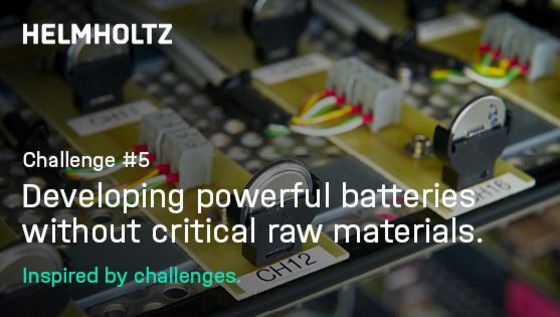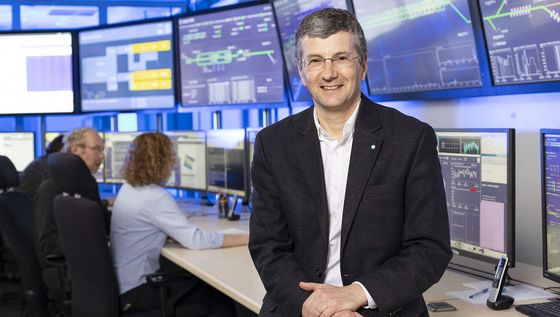|
||||||||
|
||||||||||||||||||||||||
|
|
The month is overshadowed by the terrorist attacks on Israel and the further escalation in the Middle East. The events also affect our research collaborations with Israel as the head of the Helmholtz office in Tel Aviv reports. In this month’s newsletter, we also turn our attention to the topic of nuclear fusion, which is currently strongly discussed in Germany: Wim Leemans from DESY advocates also pursuing laser-based approaches in fusion research and explains what contribution the Helmholtz Association can make. And experts from cancer research appeal to politicians to strengthen prevention research. |
|
|
|
|||||||||||||||||||||||
|
|
|
|
||||||||||||||||||||||||||||||
|
|
|
|
Why are severe courses of SARS-CoV-2 infection less common in children and adolescents than in adults? Scientists at the German Cancer Research Center (Deutsches Krebsforschungszentrum, DKFZ) have now discovered that the immune system in the upper respiratory tract is much more alert and active in children before infection than in adults and is therefore better equipped to fight the virus. During the pandemic, less than 0.001 percent of infected schoolchildren died from the infection. With age, the mortality rate increased almost exponentially, reaching over 10 percent in the very aged. Children and adolescents have fewer symptoms and a shorter duration of illness than adults do, and especially the elderly, although initial viral loads do not differ significantly. Researchers from the Berlin Institute of Health at Charité and the DKFZ took an important step toward understanding the causes of this remarkable resistance children have to severe COVID-19 disease as early as 2022. They discovered that the epithelial cells of the nasal mucosa of healthy children are permanently on “high alert”. But why is it that children’s nasal mucosa is so much better prepared to defend against SARS-CoV-2? To answer this question, Marco Binder and his team at DKFZ, together with colleagues from BIH, investigated the cellular composition of the mucosa in the nasal cavity of healthy children in even greater detail at the level of individual cells. The main result of the DKFZ virologists revealed that, compared to adults, the nasal mucosa of children is colonized by significantly more immune cells. Not only that, even in healthy, non-infected children, the individual immune cells also produce more pro-inflammatory cytokines. The immune system communicates with the mucosal cells via these messengers, stimulating them to produce the sensor proteins. Marco Binder assumes it may be worthwhile to explore prophylactic strategies for SARS-CoV-2 and other respiratory infections. “Such approaches could aim to mimic the cellular composition of children’s mucosal tissue, for example, by inhalation of low-dose cytokine preparations.” (Image: Pezibear/Pixabay) Also:
The EDEN ISS Antarctic greenhouse is back in Bremen and will be transformed into EDEN LUNA in the coming months. Astronauts will be able to train in the cultivation of vegetables, salad ingredients and herbs, as well as in the technology and procedures behind this, integrated into the LUNA test and training facility planned jointly by DLR and ESA in Cologne. Read more |
|
The most exciting thing about my job is that it is so diverse. I am very grateful that I am free to choose my research topics. It is also a great privilege that I get to work with such talented and motivated people. Gaining new insights together and sharing those makes me get up every day with excitement. I also like that so many young students with a thirst for knowledge are interested in our topics and are engaged in the lectures and seminars.
I am very lucky that the European Research Council has granted my wish by awarding me an ERC Starting Grant for the SPARSE-ML project. For this project, I changed the subject from statistical physics to machine learning and took some career risk. Therefore, even if time and money were no object, I would still work on SPARSE-ML, only on a larger scale.
I would love to have dinner with Ilya Sutskever, OpenAI's Chief Scientist, to talk about whether we really need these massive deep learning models and whether superalignment is possible. |
|
|
|
One thing is certain: Nuclear fusion is seen in Germany as a significant element of a future renewable energy supply portfolio and is of outstanding strategic importance for achieving the goals of the energy turnaround and securing Europe as a high-tech location. The most advanced concept for nuclear fusion energy is based on magnetic confinement of hot plasmas, which can be realized by two different approaches: Tokomak or stellarator. Experiments based on this approach are already getting close to conditions needed to release energy from plasma. The world leader in the development of stellarators is Wendelstein 7-X in Greifswald. In this facility, essential technologies relevant for a power plant are already integrated. A power plant technology suitable for everyday use based on this can probably be made available in the next two decades. The funds required to get there will amount to around one billion euros per year over this period. In the field of laser-assisted nuclear fusion, ignition was recently successfully demonstrated for the first time when in at least two separate experiments at Lawrence Livermore National Laboratory in the United States, high-energy laser pulses caused a pellet to ignite. More energy was generated than was supplied to the pellet in laser energy. However, it must be taken into account that in these experiments, a hundred times more energy had to be injected into the laser system itself. In addition, it has only been possible to fire one shot per day. For a fusion power plant millions of shots per day would be necessary. Moreover, before a power plant-ready concept can actually be developed, significant intermediate goals must still be achieved. In other words, a great deal of basic research is still needed to make laser-assisted nuclear fusion a power plant technology suitable for everyday use. Nevertheless, pursuing this concept can add a great deal of value, both in the field of fusion research and beyond. In this context, the Helmholtz Association can make an effective contribution in, among other things, the field of high-energy density physics, as well as in research into laser-plasma interaction, which plays an essential role in the development of compact plasma-based accelerators. In addition, the Helmholtz Association can contribute a wide range of core competencies to the research field: From modeling and simulation activities on high-performance computers, as used for plasma physics, to a broad spectrum of materials research, from which magnet-based fusion research also benefits. However, this will require additional resources. We need investment in high-power laser facilities, which are an essential element in the development of laser plasma accelerators. We need partnerships, for example, with the Fraunhofer-Gesellschaft and industry, because they offer great opportunities for technology development. But we also need to create new centers of excellence because they play a coordinating role in answering fundamental questions about fusion research. And we need to invest in young talent, because only with young talent can we shape the future. (Photo: DESY) Discussion paper of the Helmholtz Task Force “Laserbasierte Fusionsforschung” |
|
Do you have a degree in journalism, communications or comparable training? Do you have strong conceptual skills, a very good writing style and like to put complex topics into a generally understandable form? Then this job could be something for you: The Helmholtz office in the heart of Berlin is looking for support for the Communications and External Relations department. Among other things, you will develop further the media relations and messaging strategy for the Helmholtz Association, coordinate media inquiries, create press releases and other editorial formats, and design new media relations services for the Helmholtz Association's centers. Have we piqued your interest?
|
Published by: Helmholtz Association of German Research Centres, Anna-Louisa-Karsch-Str.2, 10178 Berlin Editors: Sebastian Grote, Franziska Roeder, Martin Trinkaus Photo credit: Phil Dera (Editorial) No subscription yet? Click here to register If you no longer wish to receive our newsletter, simply click here: Unsubscribe © Helmholtz
|
![[Translate to Englisch:] [Translate to Englisch:] Franziska Roeder](https://www.helmholtz.de/assets/helmholtz_gemeinschaft/_processed_/5/5/csm_Franziska_Roeder_Monthly_600x600_fb078b8a96.png)

![[Translate to Englisch:] [Translate to Englisch:] Bild: Rades/Shutterstock](https://www.helmholtz.de/assets/helmholtz_gemeinschaft/_processed_/a/b/csm_Kind_Covid_Test_c_Rades_Shutterstock_1920x_099b989879.jpg)
![[Translate to Englisch:] [Translate to Englisch:] Rebekka Burkholz. Foto: Tobias Ebelshäuser/CISPA](https://www.helmholtz.de/assets/helmholtz_gemeinschaft/_processed_/f/e/csm_burkholz1_c_CISPA_Ebelshaeuser_1920x_8c8516be15.jpg)
